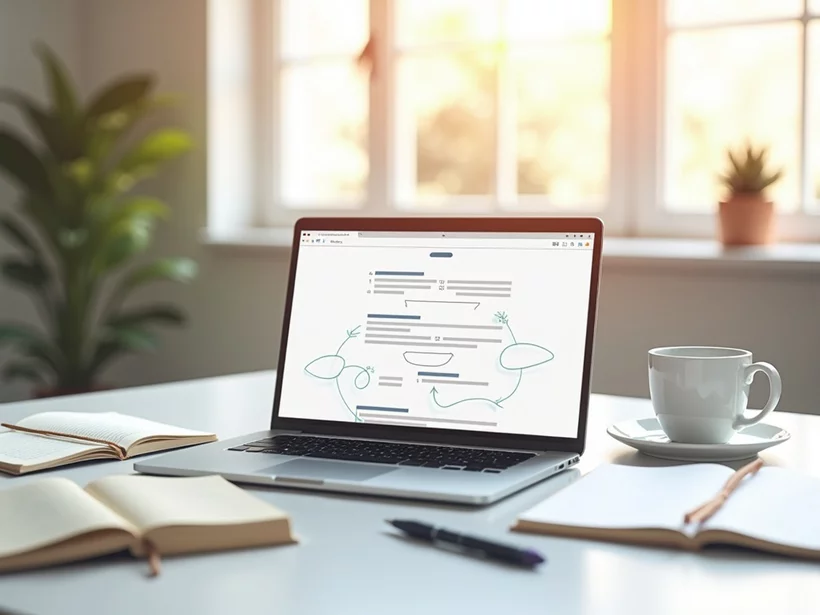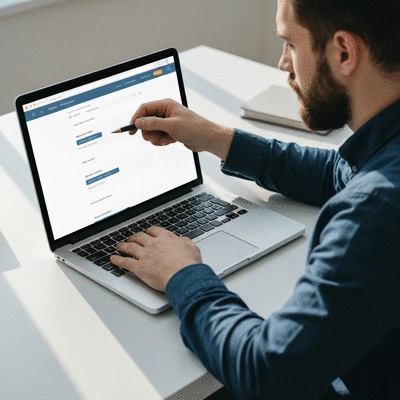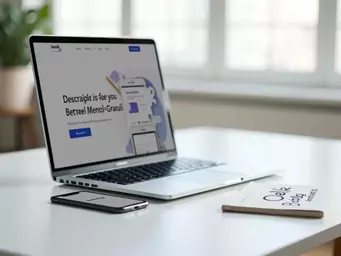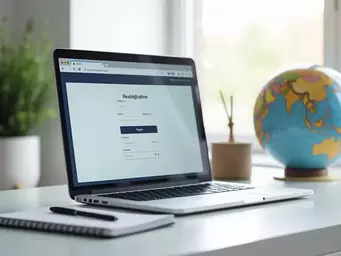Effective Internal Linking for SEO

Have you ever wondered how a simple change in your website's structure could elevate your SEO game? Internal linking might be the answer you’re looking for, serving as the backbone of a robust content strategy.
What You Will Learn
- Internal linking enhances SEO by improving crawlability and helping search engines understand your site's structure.
- A well-executed internal linking strategy can significantly boost user experience and engagement on your site.
- Linking to evergreen content can attract consistent long-term traffic and increase its authority over time.
- Regular audits of your internal links are essential for maintaining their effectiveness and ensuring a seamless user journey.
Internal Linking Strategy: Impact & Actionable Steps
This visual illustrates the multifaceted benefits of a strong internal linking strategy and outlines actionable steps for implementation. For more insights on how to find compelling topics, consider finding evergreen content ideas that resonate with your audience.
Why Internal Linking Matters for SEO Success
- Improves Crawlability
- Enhances User Experience
- Distributes Link Equity
How Evergreen Content Benefits
- Long-Term Traffic
- Increased Page Authority
- Deeper Engagement
Actionable Steps to Implement Best Practices
- Conduct internal link audit
- Create content inventory
- Utilize descriptive anchor text
- Regularly update your links
Encouraging Continuous Improvement
- Regular Audits
- Engagement with SEO Community
- Adapting to Google Algorithm Changes
Understanding the Role of Internal Linking in SEO for Evergreen Content
When it comes to enhancing your website's visibility, the concept of internal linking is often overlooked. As someone who has dedicated my career to empowering businesses with a strong online presence, I can confidently say that internal links are a powerful tool in your SEO strategy. They not only help search engines understand the structure of your site but also guide visitors through your content, making their experience smoother.
A well-planned internal linking strategy can significantly boost your site's SEO performance. By connecting your content effectively, you can make it easier for search engines to index your pages, which is crucial for improving visibility. So, let’s dive into why internal linking matters and how it can set the stage for your evergreen content to shine! To further enhance your content's structure and SEO, understanding topical authority in SEO explained is paramount.

Why Internal Linking Matters for SEO Success
Internal linking plays a vital role in establishing your site's authority. Here are a few reasons why it matters:
- Improves Crawlability: Internal links help search engines discover your pages more efficiently.
- Enhances User Experience: They make navigation intuitive, allowing users to find related content easily.
- Distributes Link Equity: Internal links can pass authority from high-ranking pages to newer content.
By implementing a thoughtful internal linking strategy, you can drive more traffic to key pages and improve your overall SEO performance. When I work with clients at Authority Assets & Digital Real Estate, we prioritize internal linking to ensure that every piece of content contributes to the site's health and discoverability.
How Evergreen Content Benefits from Strategic Internal Links
Evergreen content, which remains relevant over time, thrives on internal links. This type of content often serves as a foundation for your website, so supporting it with effective internal linking can have a lasting impact. Consider these benefits:
- Long-Term Traffic Generation: Well-linked evergreen content can attract consistent visitors year after year.
- Increased Page Authority: Linking to your evergreen content can enhance its authority, making it more likely to rank higher.
- Encourages Deeper Engagement: Visitors are more likely to explore related articles, boosting page views and time spent on site.
At Authority Assets & Digital Real Estate, we emphasize the importance of linking evergreen content to newer articles. This strategy not only benefits SEO but also enriches the user experience, inviting readers to delve deeper into your knowledge base.
Improving User Experience (UX) Through Effective Internal Linking
User experience is a fundamental aspect of any successful online presence. By using internal links wisely, you can significantly enhance how visitors interact with your website. Here’s how:
- Guided Navigation: Internal links can direct users to related topics, helping them navigate your site intuitively.
- Reduced Bounce Rates: By linking to engaging content, you encourage users to stay longer on your site.
- Contextual Relevance: Links provide context and enhance the value of your content for readers, making it more enjoyable.
As someone who understands the nuances of digital marketing, I believe that prioritizing internal linking not only supports SEO efforts but also fosters a community of engaged readers. When your audience finds value in your content, they are more likely to return, creating a lasting impact on your brand's online presence.
Did You Know?
According to a study by Moz, internal links have a significant impact on SEO performance, accounting for 80% of the signals that search engines use to rank pages. This emphasizes the importance of a well-structured internal linking strategy in boosting your site's visibility and authority.
Frequently Asked Questions About Internal Linking
Key Takeaways for Effective Internal Linking Strategies
Effective internal linking is a crucial aspect of SEO that cannot be overlooked. It's not just about creating connections between pages; it's about enhancing the overall user experience and guiding search engines to understand the structure of your content. By implementing a well-thought-out internal linking strategy, you can significantly improve your website's visibility and authority.
To summarize the importance of internal linking, consider these key points:
- Boosts SEO performance: Internal links help search engines crawl your site more efficiently and understand the context of each page.
- Enhances user experience: By providing a seamless navigation structure, users can easily find related content, encouraging them to stay longer on your site.
- Distributes link equity: Internal links allow you to pass authority from high-performing pages to other valuable content, enhancing their chances of ranking well.
By focusing on these aspects, you can create a solid foundation for your content and establish authority in your niche. Now, let’s look at actionable steps you can take to implement best practices in your internal linking strategy today!
Actionable Steps to Implement Best Practices Today
Taking the first steps to improve your internal linking strategy can seem daunting, but it doesn't have to be! Here are some practical actions you can start implementing right away:
- Conduct an internal link audit: Review your existing content to identify opportunities where links can be added or improved.
- Create a content inventory: List your pages and categorize them into pillars and clusters to establish a clear linking structure.
- Utilize descriptive anchor text: Make sure your internal links use specific keywords that describe the linked content, enhancing relevance.
- Regularly update your links: Check for broken links and replace them with new, relevant content to keep your internal linking strategy fresh.
As I often remind my clients at Authority Assets & Digital Real Estate, the key to successful internal linking is consistency and relevance. Each link you create builds a web of connections that can lead users and search engines alike to valuable content. For a detailed guide on creating such content, explore creating evergreen content: a guide.

Encouraging Continuous Improvement in Internal Linking
In the ever-changing world of SEO, it's important to stay on top of your game. Continuous improvement in your internal linking strategy will not only help maintain your current standing but also ensure growth in the long run. Here’s how you can foster that growth!
Regular Audits for Enhancing Link Strategies
Conducting regular audits is essential for discovering areas that need improvement. By evaluating your internal links periodically, you can ensure that all connections are functional and effective. Consider these steps for a thorough audit:
- Check for broken links: Identify and fix any links that lead to 404 errors.
- Evaluate link effectiveness: Use analytics tools to assess which links are driving traffic and which are not.
- Refine your structure: Adjust your linking hierarchy based on user behavior and content relevance.
Through this process, you’ll continuously discover new opportunities for optimization and improvement.
Engagement with the SEO Community for Latest Techniques
The SEO landscape is always evolving, which is why engaging with the community is invaluable. By following industry leaders, joining forums, and attending webinars, you can learn about the latest strategies and techniques. This involvement will not only keep you informed but will also provide inspiration for enhancing your own internal linking strategies.
Adapting to Changes in Google Algorithm for Ongoing Success
Lastly, staying updated on Google’s algorithm changes is vital. These updates can impact how your internal links are valued, so being aware of them allows you to adapt your strategy accordingly. Key points to consider include:
- Monitor algorithm updates: Follow trusted SEO news sources to stay informed.
- Adjust linking practices: Be ready to modify your internal linking structure based on new guidelines.
- Test and analyze: Experiment with different strategies and analyze their impact on your SEO performance.
At Authority Assets & Digital Real Estate, we believe that adaptability is key to thriving in the digital landscape. By embracing these practices, you can ensure your internal linking strategy remains effective and relevant! To further understand how different elements contribute to your site's authority, read about domain age and SEO authority.
Recap of Key Points
Here is a quick recap of the important points discussed in the article:
- Boost SEO performance: Internal links help search engines crawl your site more efficiently and understand the context of each page.
- Enhance user experience: A seamless navigation structure encourages users to find related content easily, keeping them engaged.
- Distribute link equity: Passing authority from high-performing pages to other valuable content enhances their chances of ranking well.
- Conduct regular audits: Identify broken links and evaluate link effectiveness to continuously improve your internal linking strategy.
- Utilize descriptive anchor text: Use specific keywords in your internal links to enhance relevance and improve user navigation.









